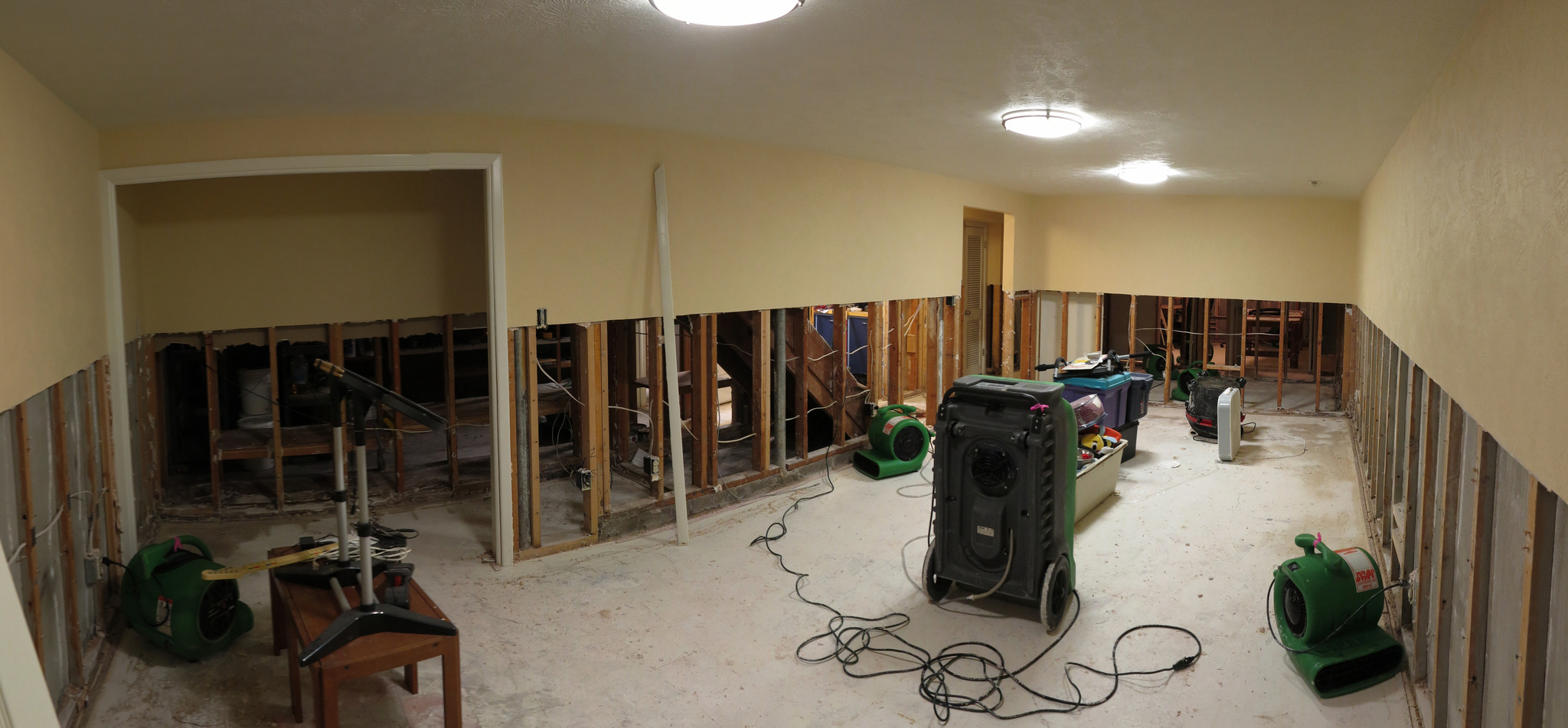A home flooding can result in a messy cleanup as well as have an adverse effect on your health. Not only would you have to deal with potential mould growth, but you could also suffer from respiratory problems and be exposed to viruses and bacteria. If you live in a low-lying area or have a combined sewer system, your basement could be susceptible to flooding. Water damage to homes can be caused by an overload of the municipal sewer system, overland flooding and the seepage of water through cracks in basement walls and floors.

Precautionary Measures
DO NOT attempt to enter the flooded area until your local electric utility has shut off the power supply. If you are within the section of the house that has been flooded, leave immediately if it is safe to do so or call for help. Never attempt to unplug any appliances while standing in water, or if the area is damp, this could increase your risk of an electric shock!
Notify your insurance representative as soon as possible, so that compensation can be given if loss is covered by your insurance policy
Clean the affected area within 48 hours if it is safe to do so, or as soon as possible.
Protect your health! If you suspect that sewage-contaminated water has entered your home, contact your environmental health officer or community health representative for instructions on how to dispose of affected items, according to local regulations. A more thorough cleaning may also be required.
Before power can be restored, get a Licensed Electrical Contractor to inspect the electrical system and flooded appliances.
The Cleanup Process
Wear protective gear and use the correct equipment in the cleanup process. For a more effective cleanup and in order to adequately protect you, Canada Mortgage and Housing Corporation suggests utilizing “disposable gloves, protective mask, rubber boots, goggles, pails, mops, sponges, plastic garbage bags, unscented detergent and water”. Ensure that the area is well ventilated.
Remove water and other contaminants and dispose of household items that are difficult to dry after 48 hours. Canada Mortgage and Housing Corporation recommends utilizing pumps or pails to remove standing water and complete the drying process with a “wet/dry shop vacuum”. Mud and debris should also be removed as well as flooring and drywall that have been saturated by flood water.
Thoroughly clean affected as well as unaffected areas and any items that were secured from the flood. It is important to speed up the drying process with fans, heaters and dehumidifiers in order to prevent mould growth.
Note
If your home is flooded, it is important to remain alert and take precautionary measures to protect your health. While you may not be able to predict when disaster strikes, there are preventative measures that you can take to protect the interior and exterior of your home, such as installing a backflow prevention valve to prevent sewage from backing up into your basement. You should also store important documents and items of value in a safe place and refrain from keeping electrical appliances on the floor.
Contact a My Insurance Broker Adviser today to find out how you can obtain added protection for your home from water damage. Reach us at 1 (855) 482-5001.
